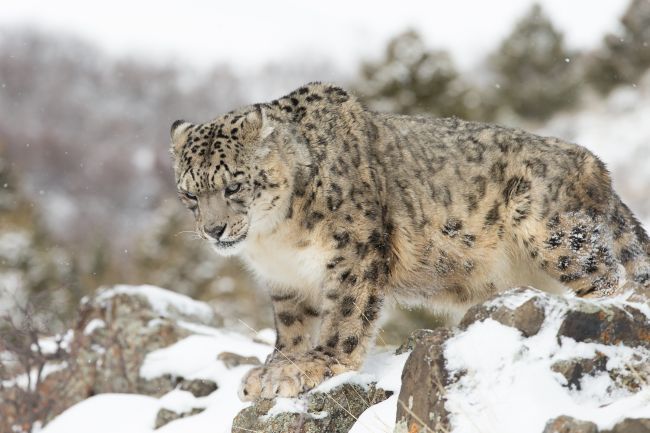
From the largest of jungle dwellers, to the tiny cats that live in desert caves, some of the world’s most stunning wild cats are facing extinction. With rampant poaching, and sparse land and resources, these mighty hunters are scrambling to find food and shelter; some having to abandon their natural habitats to survive. Look at the list below to learn about some of the endangered cat species.
Endangered wild cats:
- Clouded Leopard: This cat’s dynamic coloring and bold markings certainly distinguish it from other Southeast Asian wild cats. Though recently pronounced to be extinct in Taiwan (where this creature originates) there are said to be up to 10,000 other Clouded leopards scattered across Asia.
- Marbled Cat: Like the Clouded leopard, this wild cat congregates in South East Asia, living primarily in trees and feeding on small reptiles and birds. Though they have not reached the level of critically endangered, the Marbled cats are susceptible to extinction, having less than 10,000 existing.
- Cheetah: Swift Cheetahs are native to Africa and require large stretches of land to roam and hunt for survival. Though these racing cats are not yet among the most at-risk of felis species, their numbers are decreasing yearly, with just over 12,000 living in the wild.
- Snow Leopard: These cats are rarely seen by human eyes, as they live in far off area of extremely cold temperatures, and tend to be aloof and elusive. The remaining 4,000-6,000 of these sleek creatures hide in the remote alpine regions of Central Asia.
- Andean Cat: In both coloring and demeanor, these miniature wild cats have often been compared to the abstruse Snow Leopard. Until recently, there have only been a handful of pictures of the Andean Cat. They tragically lack the conservation support other species enjoy, and their population consists of a meager 2,000.
- Flat-headed Cat: Not many have heard of this rare felid species. This miniscule cat (of which there are less than 2,500) dwells in the wetlands of Borneo, the Thai-Malay Peninsula and Sumatra. Though they were once classified in the felis genus, the flat-headed cat is one of a few small cat species that comprise the prionailurus genus (mostly aquatic animals that survive mainly on fish).
- Bornean Bay Cat: This new-comer to the world of scientific observation was only first photographed in1998, and much remains a mystery about this native of Borneo since almost no research has been done about them. There are believed to be fewer than 2,000 of the ruddy-haired Bornean bay cats left in the world.
- Tigers: This majestic giant cat is ranked as one of the world’s most critically endangered species of all. Among those at highest risk are several tiger subspecies such as the South China Tiger, the Sumatran and Bengal Tigers (the two most endangered), the Amur Tiger and the Malayan Tiger. These beloved jungle creatures are speedily declining in numbers, as they are often poached for their glorious coats, or sold as live specimens, or slaughtered for body parts and medicinal uses.
- Iberian Lynx: Hailing from the Iberian Peninsula, these cats are considered critically endangered because of their increasing lack of habitat, and the threats posed by hunters, wild dogs and cars. There are believed to be fewer than 300 the Lynxes living in the wild.
- Amur Leopard (or Far Eastern Leopard): The Amur Leopard is considered one of the most endangered species native to parts of Russia and China. In 2007 it was believed that only about 25 of these wild cats existed, though as of 2015, there are roughly 57 in Russia, and 12 recorded in China. They have faced extinction more severely than many other cat species, and are at risk due to poaching, inbreeding, and forest degradation.
- Sand Cats: These are the smallest of the wild cat species, and can be found in Africa and Central Asia and the Middle East. They have unique striped markings on their forelegs, and have an unusually wide head and pointed ears. These creatures’ numbers are scattered and steadily dwindling, and difficult to number due to rarity.
- Black-footed cat: This tiny native of southern Africa weights only up to 5 lbs, but is a fearsome fighter and hunter. Being shy of humans, these nocturnal felines are rarely seen, and generally make their habitats by burrowing underground. Their current numbers are uncertain, but we know the amount of Black-footed cats are dropping, as they frequently fall prey to trappings and poison meant for larger animals.

